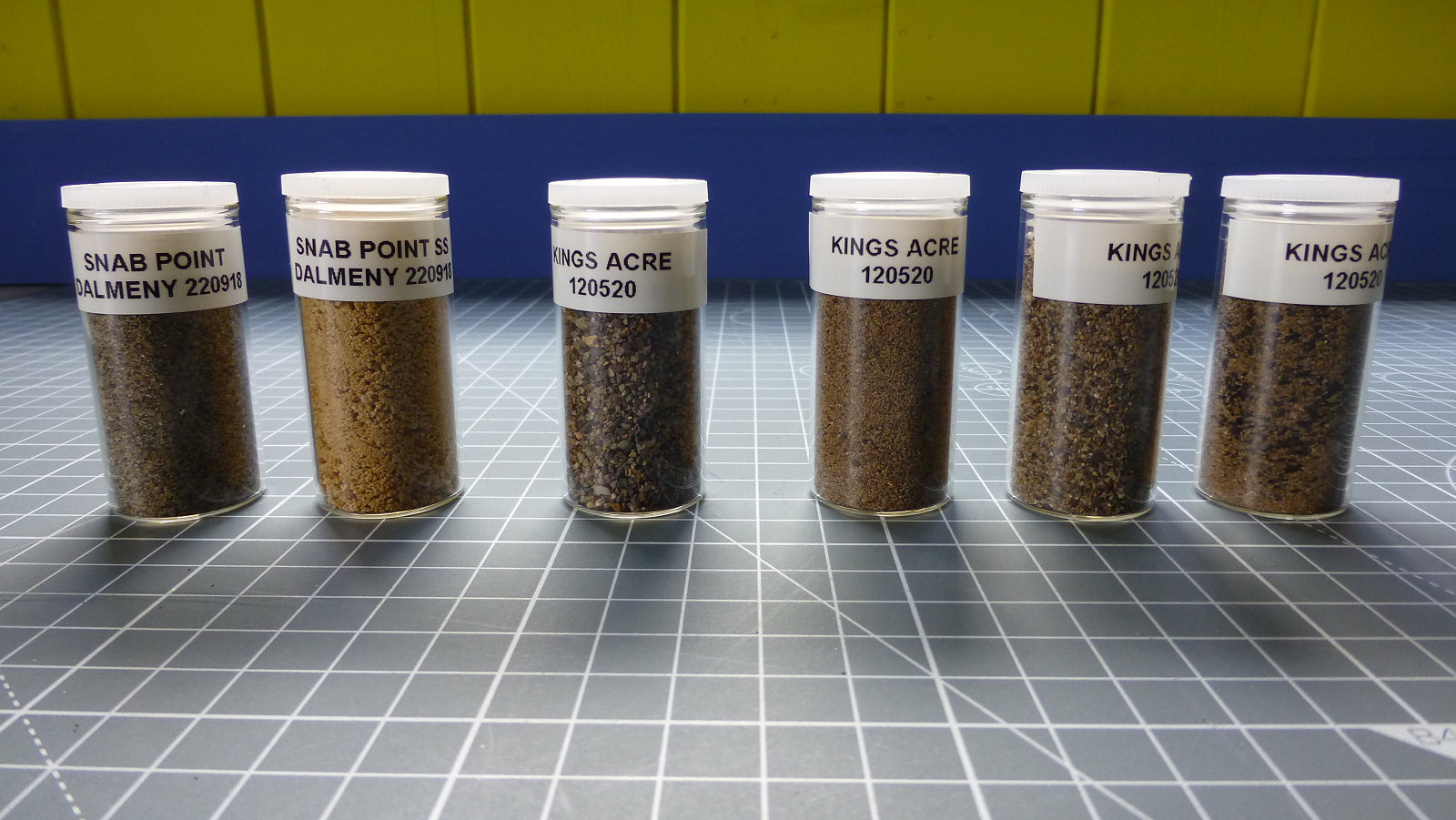Sand and gravel pits can provide many different samples for Sand Collecting. In fact, on a recent visit to one such quarry, it was not difficult to gather around ten different samples and on another visit I was able to procure 21 samples. These are not always immediately obvious and close inspection is sometimes required. You may also need to clean off the face of the exposure to see the different beds of sand, some of which are often very thin but still collectable.
As well as the sand found in the exposed areas of the quarry, there may also be sand that has been processed, if that falls within your collecting remit. Sand resulting from natural weathering can also be found and various grades and colours of sand collected. Look out for windblown dust as well if visiting during the summer months. During the winter months, rain washed sand may also be found.
Old, abandoned sand pits are also worth visiting and while fresh exposures may not be as readily available as in working quarries, you may be lucky. Also, natural weathering may have created areas where sand and similar materials can be found.
To find sand and gravel pits start with the local business directory, which should provide the locations and telephone numbers of working pits. The next best source are maps, although sand and gravel pits tend to come and go as resources are exhausted, so they may no longer exist when you arrive on location. Many sand and gravel pits are now reinstated after use and very little of the original exposures will remain.
Before you visit any sand pit it’s always best to seek permission, as quarries are dangerous places to be alone. A polite enquiry to the site manager requesting access should be made although access may not always be granted. If you are given permission, you may need to provide a hard hat, safety boots and a hi-visibility vest.
Of course, it goes without saying that care must be taken when collecting at these locations as there are a number of hazards to watch out for. Be aware that exposed faces can collapse at any time and that low-lying wet areas might conceal super-saturated patches of sand that are effectively quicksand and can trap the unwary. Some pits may have settlement tanks, large ponds where sediment and silt settle out before the water is discharged into the water course. These are very dangerous areas and no matter how tempting the sand may be, stay well clear.
Copyright ©2020 Gary Buckham. All rights reserved.


